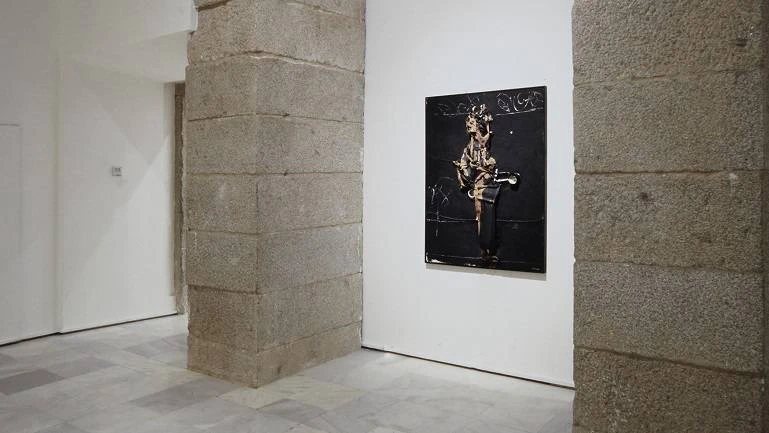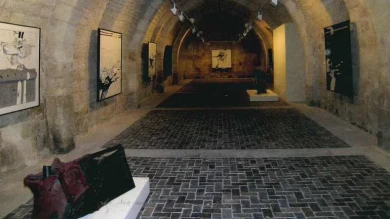Manuel Millares

This selection, made up of almost one hundred works, starts off with his series of Pictogramas canarios (1951-1952), which introduce the use of sand, pieces of raffia palms and even fragments of ceramics, and stem from his research into the acerbic Canary Island culture. They also underline his interest in anthropology. The poet and art critic, Rafael Santos Torroella, expresses how they represent: “His first attempt to discover a collective dimension to his work”, while at the same time looking for certain origins to justify his art. Around this time he comes into contact with the defenders of the artistic revival, from Neo-primitivism to the freedom of creation, such as Eduardo Westerdahl and Ángel Ferrant, and participates in the Week of Abstract Art in Santander (1953).
Once settled in Madrid, in 1955, Millares' career starts to become tied to exhibiting and the theories of the El Paso groups until the end of the decade. His shift towards Informalism can be seen in his pictorial experimentation with the mediums and aesthetic and expressive qualities of the materials (sackcloth and wooden frames) as they undertake the artistic practice as a process of exorcism from which to give new meaning to technique and materials. The use of sackcloth, which is sewn, torn and mended to become the piece itself, and the use of stripped down colours - blacks, whites and reds - turn the crisis of the fabric into the only possible support for the painting. He and the other members of the group believe that art must be abhorrent (the canvas as a battle field) without losing its aesthetic quality. The associations of the sacking with a shroud - the idea of the material death of man and his reminiscences (graves and tombs) - become the focal point of his work, culminating in his series Homúnculo, which begins in 1960. Millares continues with this materic and symbolic approach despite the break-up of El Paso, and his work accentuates and focuses on the anonymous but universal subject with the inclusion of belongings (fabrics, shoes). Around 1970-1971 he once again introduces writing into his works and develops unusual calligraphy with more insular messages; his desire is to make art which becomes ethically committed to the circumstances.
Artists
Kunsthalle Bielefeld, Germany (March 29 - May 15, 1992); Centro Atlántico de Arte Moderno, Las Palmas de Gran Canaria (November 24, 1992 – February 14, 1993)
Organised by
Museo Nacional Centro de Arte Reina Sofía
Image gallery

Itinerary
Museo Nacional Centro de Arte Reina Sofía, Madrid
9 January, 1992 - 16 March, 1992
Kunsthalle Bielefeld
29 March, 1992 - 17 May, 1992
Centro Atlántico de Arte Moderno, Las Palmas de Gran Canaria
24 November, 1992 - 14 February, 1993
